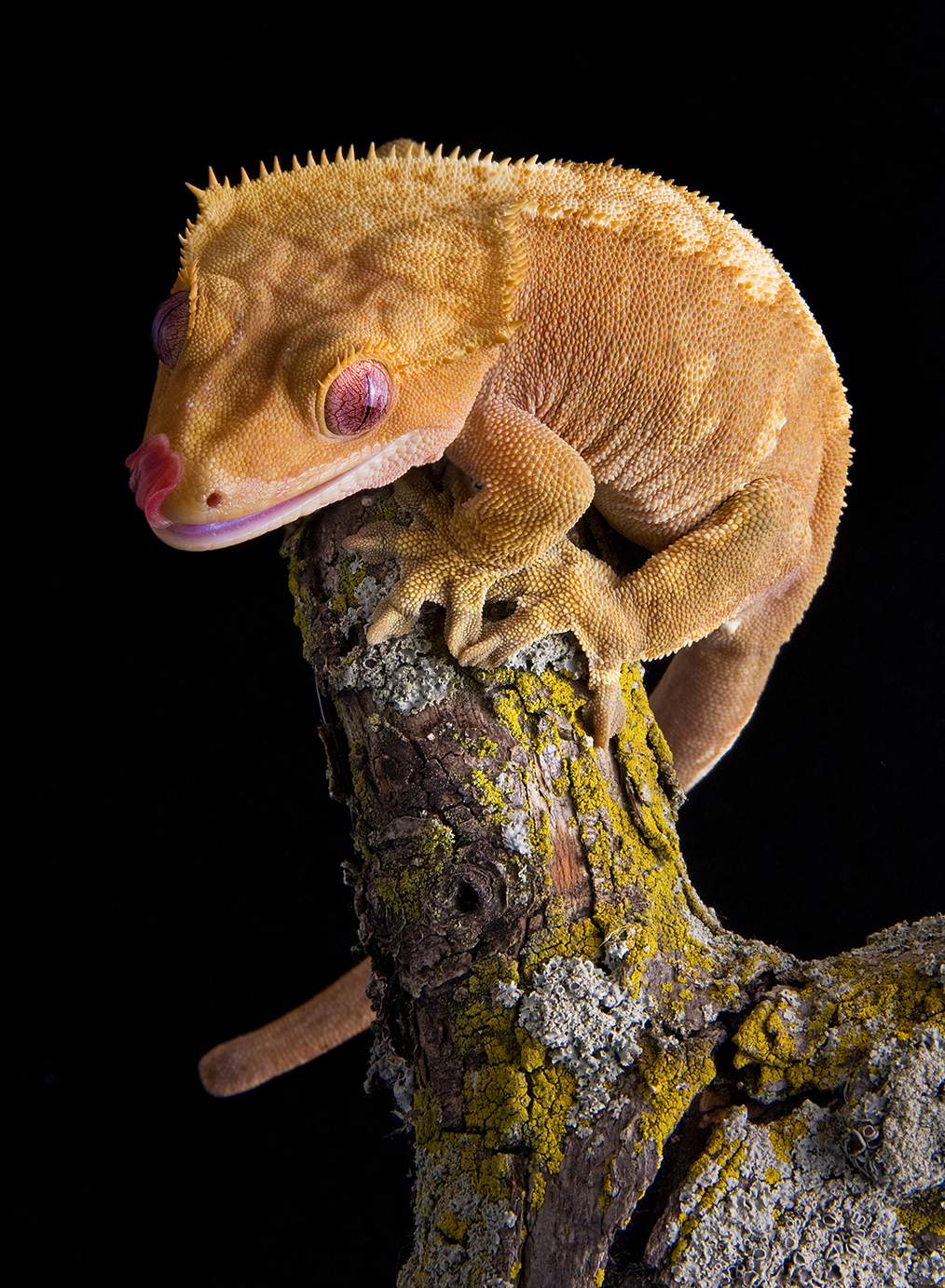One Hot Reptile
Erik J. Martin //March 23, 2017//
Want a way to ensure more register rings? Think insurance, as in Geico. That company’s pitchman has entrenched geckos within pop culture. It’s your job to get patrons to enroll in a pet ownership policy that involves purchasing more gecko goods from your shop.
Most experts will tell you that geckos are a great beginner reptile and gateway pet that can get customers excited.
“Most people who come to stores looking for geckos want them because they have a friend that has one or they’ve seen one in a classroom, library or nature center,” said Jason Oneppo, research and development manager for California-based San Francisco Bay Brand. “Their hardiness and gentle nature, plus the fact that most of the common geckos offered are captive bred, makes people feel good about having a pet gecko.”
Going Live
Frank Indiviglio, a herpetologist and zoo/pet trade consultant in New York City and Long Island, agrees that geckos and their gear get attention. So if you’re not already carrying live geckos, he suggests you get with the program and tap into a popular and profitable segment.
“After skinks, geckos are the second largest group of lizards in terms of species diversity, which provides retailers an opportunity to offer a wide range of breeds, colors and traits that appeal to different budgets,” said Indiviglio, who recommends starting with a safe option like a leopard, crested, house and Madagascar day gecko. “The sweet spot price range you want to hit is $5.99 to $30 per gecko.”
That means partnering with one or more reputable local breeders who may be able to expand your line to include other crowd-pleasers like arboreal species, terrestrial breeds and some species that are newer to the trade.
“Leopard and fat-tailed geckos, crested geckos and other New Caledonian species have separated themselves from the pack, with the morphs of each having completely surpassed sales of normal-looking individuals,” said Steve Sotelo, division manager for Exo Terra, a Rolf C. Hagen USA Corp. company in Mansfield, Massachusetts. “As a result, they have become very popular.”
Cage Considerations
Whether you choose to stock these live lizards or not, it’s smart to provide ample related merchandise. When it comes to habitats, consider that many of these geckos thrive on more natural designs and nocturnal setups.
Notables in this category include Exo Terra’s new Habisphere Lifestyle Desktop Terrarium, which features a stylish bent front window for maximum viewing and an energy-efficient day and night light built into the top lid and controlled with the touch of a button, and Zoo Med’s Naturalistic Terrarium Crested Gecko Kit, a vertically oriented habitat that comes with bush plants, a climbing branch, substrate, food and water dishes, water conditioner, vitamin complex, calcium supplement and a care handbook.
Food Facts
When considering gecko foods to stock in your store, Indiviglio states how important it is to offer a variety, including complete commercial (or prepared) diets as well as insects like crickets, roaches, hornworms and black soldier fly larvae.
“If I were a retailer, I would encourage customers to feed a wider mix of foods—not just live foods,” said Indiviglio, who recommends carrying prepared diets by manufacturers like Repashy and Pangea, including Pangea’s Fruit Mix with Insects Complete Gecko Diet.
Oneppo notes that prepared diets—some of which come pre-mixed and ready to use while others require mixing with water—represent the latest gecko trend.
“These prepared diets allow people to keep some species of gecko, such as crested, day, gargoyle and others without having to use live food,” Oneppo stated.
Exo Terra recently launched two pre-mixed diets: Day Gecko Food and Crested Gecko Food, each offered in disposable cups to reduce waste and prohibit reptiles from tracking excess food on glass or décor.
“Since the diets are stabilized and pre-mixed, they also don’t dry out as readily as powder diets would,” Sotelo noted.
Can’t Beat The Heat
Consumers are warming up to new heating products, too, including Zoo Med’s new Nano lamps and fixtures, ideal for small gecko terrariums. Included in this Nano line are a dome fixture, combo dome fixture, five-watt LED, 35-watt halogen heat lamp, ceramic heat emitters, infrared heat lamps and basking spot lamps.
“Our Nano line includes some of our smallest and lowest wattage heat lamps,” explained Ashley Rademacher, animal care and education coordinator for Zoo Med Labs, Inc., in San Luis Obispo, California. “The domes are only 4 inches in diameter and perfect for small terrariums. And with heat lamps and emitters that are only 25 to 40 watts, keepers can provide proper thermal gradients in smaller habitats or were space is limited on the top of a terrarium.”
Retailers might want to consider expanding their heat source offerings.
“Try to carry different products, including under-tank heating pads that can be attached to the bottom for terrestrial geckos or to the side of the tank for arboreal species,” Indiviglio said.
Tricks of the Trade
To catch the shopper’s eye, pursue merchandising tactics that pay off.
“It’s worthwhile setting up dedicated end caps with gecko products and featuring fully staged cages with all the accessories inside,” said Oneppo, adding that retailers who don’t sell live geckos “may be wise to use plastic or plush gecko replicas inside these displays to help convey the message.”
Packaging your own bundled starter kits—complete with all the essentials for beginners—can also pay dividends.
“Think about offering a discount on combined purchases, such as a lower price if you buy a live gecko with a set up,” Indiviglio said.



















